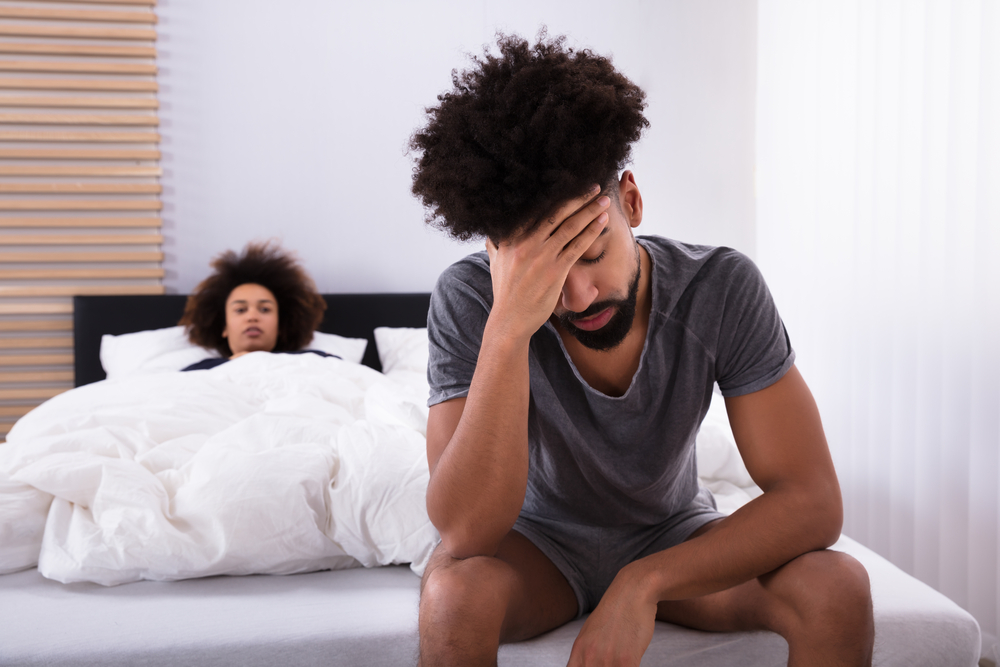
What is Penile Dysmorphic Disorder?

Penile dysmorphic disorder (PDD) is a subclassification of body dysmorphic disorder (BDD) and commonly characterized by a severe fixation on the appearance of one’s own penis, usually viewing minor or imagined problems as making it undesirable or “worse” than other penises. This can result in excessive grooming, self-help methods like using vacuums or stretchers, and sometimes going as far as multiple cosmetic surgeries. Additionally, PDD can contribute toward mental health disorders such as depression or anxiety and can even lead to impaired functioning in sexual and everyday situations.
King’s College Studies
There is very little research on PDD, but what is available comes from the same series of studies published by King’s College in London. There are several studies that look separately at characteristics of men with PDD compared to others, what might contribute toward PDD, sexual functioning and behavior, and the relationship between perceived and actual penis size. Here is what they found:
- Men with PDD are more likely to be concerned with penis size (both flaccid and erect) and testicle appearance than men with small penis anxiety and men without any sort of penis concern.
- Men with PDD are more likely to experience recurring unwanted imagery about their penis and other people’s reactions to their penis.
- Childhood emotional and physical abuse, and neglect may contribute toward the development of PDD.
- Smaller penis size, older age, higher body mass index, and a history of “schoolyard”-type teasing may also contribute toward a man developing PDD.
- Men with PDD are more likely to experience erectile and orgasmic dysfunction, as well as lower sexual satisfaction.
- Men with PDD may be more likely to attempt to alter their penis size, either through self-conducted methods (vacuum device, stretching device, etc.), or by seeking cosmetic surgical intervention.
- Men with PDD tend to view their penis as much smaller than it actually is, even more so in comparison to those with small penis anxiety and those without any penile stressors.
Treatment Options Available
It is advised to avoid surgical intervention as a treatment for PDD, as this may worsen feelings of distress surrounding penile image. Additionally, cosmetic surgeons and urologists alike tend to have some apprehension with cosmetic penile surgeries if they are unnecessary.
In line with BDD, an individual with PDD may instead be pointed toward a mental health professional, who might try cognitive behavioral therapy (CBT). CBT can help provide patients with tools to re-evaluate and shift their focus away from the distressing thoughts of (in this case) PDD.
Key Points
- PDD is a type of BDD that focuses intensely on the penis and its appearance.
- Men with PDD may be more likely to experience erectile or ejaculatory disorders and low sexual satisfaction.
- Men with PDD may engage in harmful “self-help” cosmetic procedures or request myriad cosmetic procedures.
- None of these are recommended.
- If you feel distressed over the look of your penis, it may be beneficial to speak with a mental health professional.
Resources
- American Psychological Association. (2017). What is Cognitive Behavioral Therapy?. American Psychological Association. https://www.apa.org/ptsd-guideline/patients-and-families/cognitive-behavioral
- Mansfield, A. K. (2020). Genital manifestations of body dysmorphic disorder in men: A Review. Fertility and Sterility, 113(1), 16–20. https://doi.org/10.1016/j.fertnstert.2019.11.028
- NHS. (2023, October 18). Body dysmorphic disorder (BDD). NHS choices. https://www.nhs.uk/mental-health/conditions/body-dysmorphia/
- Veale, D., Miles, S., Read, J., Bramley, S., Troglia, A., Carmona, L., Fiorito, C., Wells, H., Wylie, K., & Muir, G. (2016). Relationship between self-discrepancy and worries about penis size in men with body dysmorphic disorder. Body Image, 17, 48–56. https://doi.org/10.1016/j.bodyim.2016.02.004
- Veale, D., Miles, S., Read, J., Troglia, A., Carmona, L., Fiorito, C., Wells, H., Wylie, K., & Muir, G. (2015a). Environmental and physical risk factors for men to develop body dysmorphic disorder concerning penis size compared to men anxious about their penis size and men with no concerns: A cohort study. Journal of Obsessive-Compulsive and Related Disorders, 6, 49–58. https://doi.org/10.1016/j.jocrd.2015.06.001
- Veale, D., Miles, S., Read, J., Troglia, A., Carmona, L., Fiorito, C., Wells, H., Wylie, K., & Muir, G. (2015b). Penile dysmorphic disorder: Development of a screening scale. Archives of Sexual Behavior, 44(8), 2311–2321. https://doi.org/10.1007/s10508-015-0484-6
- Veale, D., Miles, S., Read, J., Troglia, A., Carmona, L., Fiorito, C., Wells, H., Wylie, K., & Muir, G. (2015c). Phenomenology of men with body dysmorphic disorder concerning penis size compared to men anxious about their penis size and to men without concerns: A cohort study. Body Image, 13, 53–61. https://doi.org/10.1016/j.bodyim.2014.09.008
- Veale, D., Miles, S., Read, J., Troglia, A., Wylie, K., & Muir, G. (2015). Sexual functioning and behavior of men with body dysmorphic disorder concerning penis size compared with men anxious about penis size and with controls: A cohort study. Sexual Medicine, 3(3), 147–155. https://doi.org/10.1002/sm2.63




